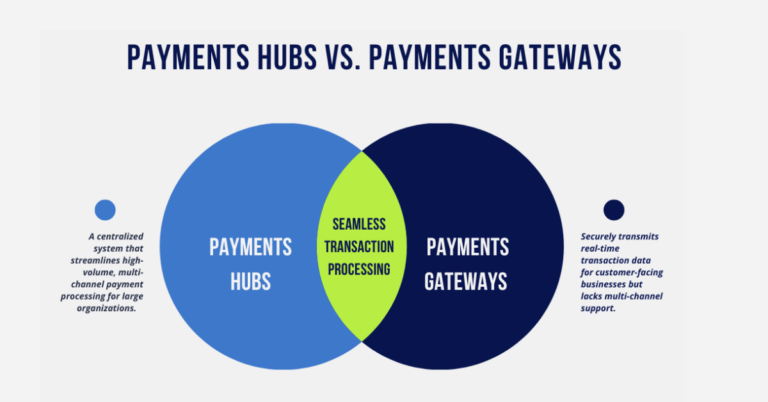The holidays bring on a flurry of activity for most businesses every year. Even with the potential of a recession looming over us, there seems to be little to no signs of it slowing down at the year’s end. Both online and retail sales are expected to grow substantially during the 2022 holiday season. During the months of November through December, holiday sales are expected to reach $1.45 to $1.47 trillion. Compared to 2021, e-commerce sales alone are expected to rise from 12.8% to 14.3% year over year.
For call centers at financial institutions, this season can get hectic. Accountholders call in for their balances, some to enquire about an overdraft and perhaps to dispute NSF fees. Also, unconventional spending may trigger fraud alerts, which increases call volume even further. Friendly fraud, in which a consumer demands a reversal of a charge they actually made (because they didn’t recognize it) triggers even more phone calls—39% of consumers have admitted taking part due to forgetting about the purchase or it being made by a family member. Of course, this increase in inquiries is all during a time of the year when many employees ask for personal time off to celebrate.
Today, many organizations use chatbots to free up customer service agents, allowing them to have more time to deliver personalized and focused support for customers with more complex issues. A recent report found that 58% of customers now opt to use chatbots for customer service. This can also apply to banking. Call centers can be relieved and provide better service when there’s a chatbot to answer standard inquiries.
We spoke with Jenn Markus, Glia’s Director of Technology Partnerships, for her take on how chatbots can help financial institutions run smoothly during the holidays.
It’s hard to get customer service right when you’re extremely busy. Do you have an example of a financial institution that you think really got it right?
There are so many examples of financial institutions doing things right, it’s hard to choose! Without calling out a specific financial institution, I would say that the most successful service organizations have common traits: they are proactively meeting customers where they are in their journey and they are balancing automation with personalized experiences.
At its core, Digital Customer Service (DCS) is all about providing a positive customer experience, based on each customer’s unique needs. Successful FIs are meeting customers in the digital channel of their choice—chat, voice, or video—but they are also offering a seamless transition between channels for live support as appropriate. Specialized AI-enabled chatbots can handle more straightforward inquiries, like reporting account balances or routing numbers, but can also transfer the complete interaction to Customer Service Representatives (CSR) for more complex questions. The result is a win-win situation: customers are able to navigate rapidly through your digital properties while CSRs are freed-up to handle more complex issues.
Considering 32% of all customers will stop doing business with a brand they loved after just one negative experience, what’s a good way for a financial institution to keep the inconvenience and frustration of card denials down, without compromising the integrity of fraud prevention?
While suspected fraudulent activity accounts for a fair share of transaction denials, there are a number of other reasons a card can be declined at the point-of-sale or during an online transaction. Throughout the transaction authorization process, there are various checks and validations occuring behind the scenes by the payment processor. Each one of these validation points present an opportunity for a transaction to be denied. In most cases, the only piece of information the cardholder will receive is a notification that their transaction has been denied and perhaps a denial code, which means nothing to them. Receiving a denial in public can be an embarrassing experience, just imagine a first date or perhaps hosting a business dinner. Additionally, the cardholder is in the dark about why their card was declined and needs to follow a multi-step process to resolve the issue.
As you mentioned in your question, according to a PWC survey, 32% of all customers will stop doing business with a brand they loved after just one negative experience, and 59% will walk away after several bad experiences. This presents high stakes for a financial institution trying to not only retain the existing cardholder accounts, but also acquire new ones and grow transaction volume.
It’s not all doom and gloom, though! While card denials are somewhat inevitable, there are solutions available to financial institutions to improve the cardholder experience. Financial institutions that offer Digital Customer Service (DCS) options for cardholders to seamlessly connect are seeing improved customer satisfaction results. Enabling cardholders to connect in the channel of their choice and where they are—OnScreen —can help resolve any issues quickly.
For those who aren’t tech savvy, what’s the best way to make digital customer service something they can actually appreciate?
Glia’s Digital Customer Service platform is well-suited for users of all technical levels. Customer Service Reps (CSRs) have a single view into the customer’s journey, providing context to the customers’ experience to and through the point of contact. CoBrowsing, or Collaborative Browsing, enables CSRs to guide customers through friction points. Reps can use DCS to demonstrate rather than tell customers how to navigate digital properties and resolve issues. Customers don’t have to download any apps and can choose the communication mode—voice, video, chat— that they are most comfortable with.
Where do you think a chatbot would be of greatest service in banking during the holidays?
During the holidays, there seems to be an increased sense of stress and pressure for customers and members. As they rush to finish holiday shopping or year-end tasks, more time-sensitive questions come up. With virtual assistants, your customers will receive a faster, more consistent support experience and your representatives will be able to easily handle multiple engagements without a decrease in quality. As I mentioned previously, chatbots can be deployed to handle routine inquiries, freeing up your CSRs to tackle more detailed interactions. As a result, there are less wait times, faster and more consistent service.
We’ve all talked to a chatbot who couldn’t answer our questions and then had to explain the issue again to a live rep or call in. What’s the best way to prevent that friction in the chatbot experience?
Digital Customer Service (DCS) offers a seamless experience for both customers and operators. Glia’s operator interface displays the customers’ interaction as well as where they are on your digital properties so that the CSR can jump straight into the interaction with full context and doesn’t need to ask “How may I help you?” Further, Glia’s platform allows operators to utilize the channel that is most appropriate for the engagement, so they can seamlessly move between chat, video or voice as well as assist with screen sharing and CoBrowsing to efficiently service customers.
From an end-user perspective, what do you think are the greatest benefits to banking with an institution that offers a chatbot?
The first benefit is meeting the customer where they are—OnScreen. Chatbots are a great entrypoint to understand what a customer needs and provide answers for simple tasks, such as a balance inquiry.
Being able to quickly speak with a live rep from within the chatbot by simply pushing a button is a tremendous convenience and also keeps the digital connection. Plus, reps benefit from seeing the full context when they get connected to the customer. Chatbots that just offer a phone number to speak to a live agent disrupt that digital connection, causing a friction point where many will simply abandon the call.
The immediacy without having to navigate the dreaded phone tree is yet another benefit, leading to a positive experience. Chatbots free up agents, to the benefit of even those who call in and DON’T use the chatbot. The call center isn’t as overwhelmed and callers are able to speak with someone fairly quickly.
This year, holiday forecasts predict a 6-8% increase in year-over-year spending in November and December. Banks and credit unions can drive spending around two months before the holidays by marketing relevant products and promoting cards so they’re top of mind/wallet. For example, increasing credit lines. And then after the holidays, offer balance transfers or convenience checks to prevent competitors from stealing away cardholders with similar offers. How could a chatbot assist?
First, simply helping to keep CSRs available, and wait times down helps a great deal during busy seasons. Financial institutions might consider deploying microbots that are able to handle specific requests common during the holidays, such as credit card spending limits. In fact, financial institutions should regularly evaluate their chatbot strategy based on seasonal usage data. Lastly, give the chatbots some character. Everyone appreciates a season’s greetings and a friendly ho ho ho in December!
Read more about chatbots in 4 Ways Chatbots Are Revolutionizing Electronic Bill Payments.
Updated from a blog originally published November 11, 2021.
Alacriti and Glia have partnered to assist financial institutions in providing their members with best in class digital-first service. Glia’s Digital Member Service Platform combines all communications into one unified digital experience. With the partnership, members have access to Ella, Alacriti’s AI chatbot that’s fine tuned to answer bill pay questions and is fully integrated within Glia’s Digital Member Service platform. For more information about Digital Member Service powered by Alacriti and Glia, please please call us at (908) 791-2916 or email info@alacriti.com.




